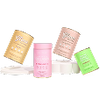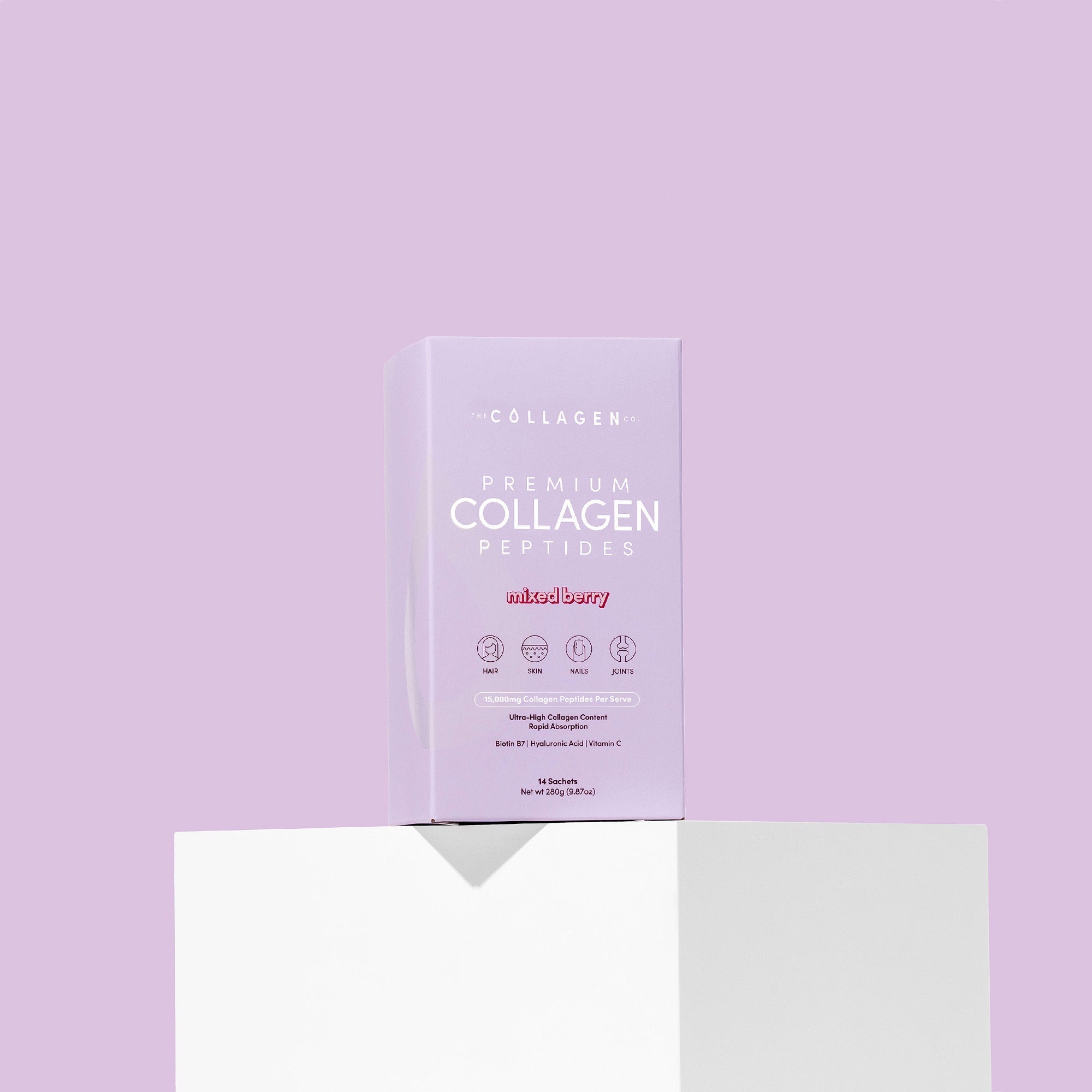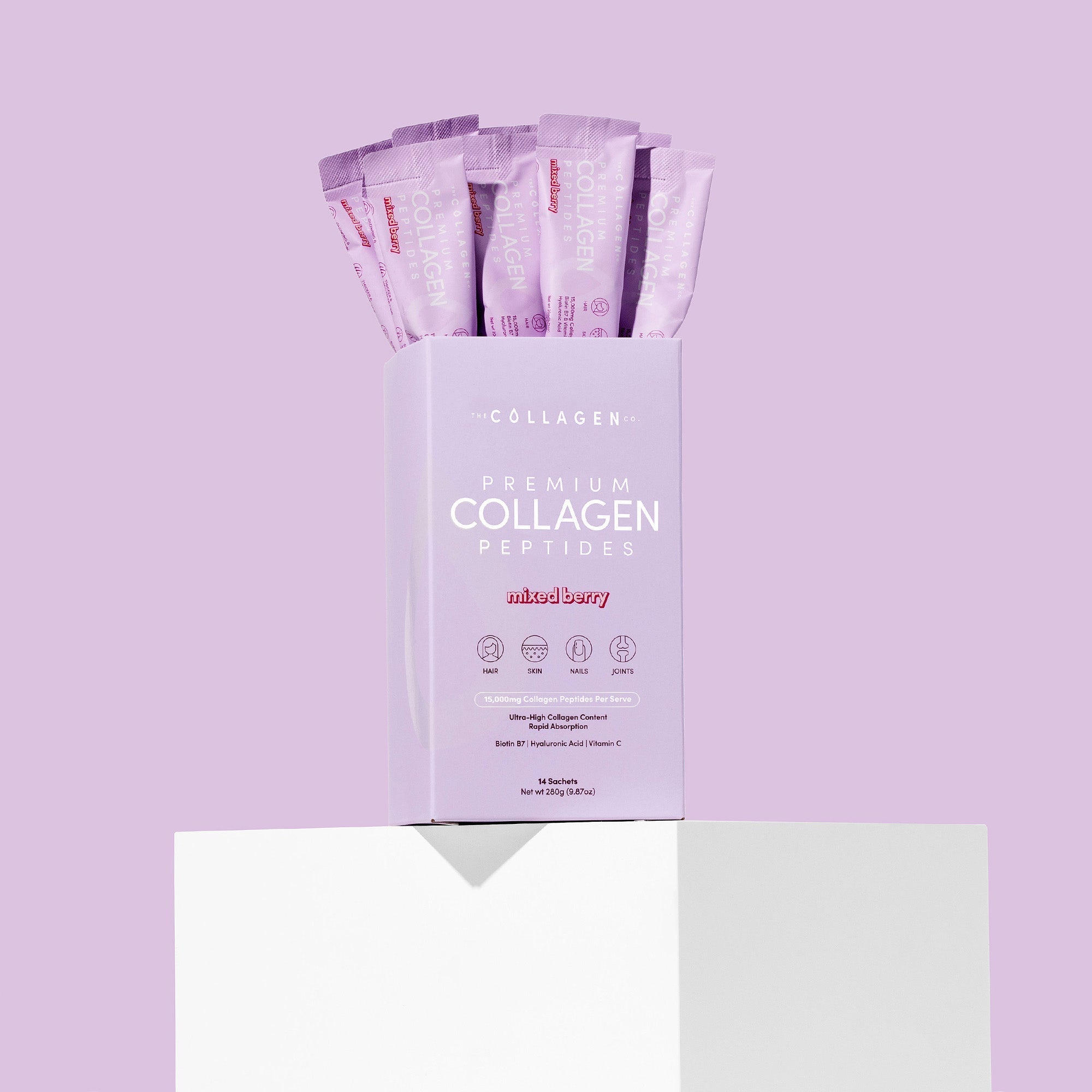Can You Get Enough Collagen for Beauty and Wellness Benefits from Food?
Posted 4th September 2023

If it were possible for you to get enough collagen — and, in turn, tap on its myriad of beauty and wellness benefits — solely through food, would you still invest in collagen supplements?
Chances are your answer's a firm no. Only, that was a trick question. Sort of.
Because while you can get enough collagen from food, you probably wouldn't want to after reading this article. But we’ll have to start from the beginning.
How much collagen should you take?
First things first. How much collagen should you take daily for brighter skin, thicker hair, a balanced gut, and more?
While there aren't any official guidelines, research and feedback from our consumers suggest that anywhere between 10 to 15 grams daily could help you realize beneficial effects in as little as 2 weeks.
But there’s a teeny, tiny catch to this.
There’s a possibility you may only see such speedy results with hydrolyzed collagen peptides, which are essentially large collagen molecules that have been broken down into smaller amino acid chains that are able to bypass your digestive tract and enter the bloodstream as intact and bioactive peptides.
Naturally, this begs the question, “Can you get hydrolyzed collagen peptides from food?”
5 foods highest in collagen content
Well, let’s examine the 5 foods highest in collagen content to find out: 1) how much collagen they contain, and 2) whether any of that comes from hydrolyzed collagen peptides.
Bone broth: You get bone broth, a savory liquid, by simmering animal bones and connective tissue in water for at least 12 to 24 hours. Most bone broths in grocery stores are made from chicken, beef, and fish. Depending on the type of animal bones used, simmering time, and various other factors, bone broth's collagen content can vary from 2 to 10 grams per cup (1 US cup = 236.59 ml).
Jellyfish: Jellyfish have a collagen content of more than 60%. Theoretically, that means 100 grams of this chewy, crunchy, gelatinous delicacy (in some cultures) could potentially offer more than 60 grams of collagen — although this figure should be significantly lower in reality, thanks to losses during extraction and processing. According to the USDA, 100 grams of "jellyfish, dried, salted" contains 5.5 grams of protein, most of which is assumed to be collagen.
Chicken and pork skin: These contain around 55% water, 35% connective tissue, which is mostly collagen, and about 5% to 10% fat. Doing some quick math, 100 grams of pork or chicken skin should thus theoretically yield 35 grams of collagen. As seen with jellyfish, though, the figure is much lower in real life. The USDA states that 100 grams of chicken skin contains 20.19 grams of protein.
Organ meats: While there are no exact numbers for how much collagen organ meats (e.g., chicken heart, beef liver, and pig brain), it’s widely known that they are one of the most collagen-rich food sources available. Besides, types 1 and 2 collagen are responsible for providing the supportive mesh in soft tissues, such as organs — which helps explain why they’d contain the youth-promoting protein in concentrated doses.
Fish: Or, more specifically, fish skin and scales (reminder: fish bones and cartilage are typically processed into bone broth). Research suggests that collagen could make up to 70% of fish skin in dry weight and 84% of fish scales, depending on the fish species.
Do any of the collagen-rich foods above contain hydrolyzed collagen peptides?
Unfortunately, in most cases, the answer is no.
That’s because collagen found in whole foods presents itself in its original form: a large protein molecule.
Meaning? To reap its health, beauty, and wellness benefits, your body will have to first cleave those long chains of amino acids into shorter collagen peptides.
And worryingly, research appears to suggest that your body does not break collagen till they’re small enough (we’re talking anywhere between 2 to 3 kDa in molecular weight) for optimal bioavailability and, in turn, efficacy.
This would explain why there are so few high-quality, credible studies highlighting collagen-rich foods’ beauty and wellness benefits. Of the handful that exist, most are pre-clinical, meaning they're performed on animals (e.g., rodents), and we're unclear whether humans would see those same benefits.
On the other hand, human research on hydrolyzed collagen peptides — which you’d typically find in collagen supplements — is extensive and growing.
And they've indeed found compelling collagen peptide benefits, from brighter, plumper skin to a balanced, happy gut microbiome to nimble, supple joints.
More reasons to reconsider using food as your primary collagen source
Beyond the absence of hydrolyzed collagen peptides, here are 2 more reasons why you wouldn’t want to rely on food as your primary source of collagen.
#1: Health concerns
If you lead a busy lifestyle, you'll likely choose packaged bone broths instead of cooking them for hours from scratch.
Unfortunately, though, there’s a dark side to their convenience: their sky-high sodium content. An average 1-cup serving of store-bought bone broth contains 451 mg of sodium. That’s already 22.6% of your recommended daily sodium intake (2,000 mg)!
Most of us already eat way too much sodium — 3,500 mg daily, on average — so imagine how adding bone broth to your diet could damage your health.
Just so you know, eating too much sodium could significantly increase your risk of developing high blood pressure, heart attack, and stroke.
It's not just the consumption of bone broth you should be wary of. Chicken and pork skins are high in fat. To get 10 grams of collagen from chicken skin, for example, you'd need to eat 50 grams’ worth of skin, which translates to 20.2 grams of fat and 225 calories.
This can be very bad news if you’re trying to manage your calorie intake and weight.
#2: Dietary preferences
After having made such a strong case against bone broth and chicken and/or pork skin, here’s what’s left on our list of collagen-rich foods:
- Jellyfish
- Organ meats
- Fish skin and scales
Now, let’s be honest. None of those are common in a typical Western diet. And unless you're an adventurous eater, you'd probably struggle to find any of them appetizing, much less suitable for daily consumption.
Takeaway
You can meet your daily collagen requirements through food.
But doing so risks health issues, hindering your weight loss goals, offending your tastebuds, and uncertainties about whether you’re consuming clinically effective collagen (because you’re not getting any readily available hydrolyzed collagen peptides).
With all that said, wouldn't you agree collagen supplements are a much better choice?
Take our Premium Collagen Peptides, for example. Every serving guarantees 15 grams of clinically effective, tasty, hydrolyzed collagen peptides, contains 0 grams fat (yes, 0!), and is low in sodium and calories (16 mg and 54 calories, respectively).
Our Beauty Marine Collagen is worthy of your attention, too. No fishiness, just 10 grams of pure hydrolyzed marine collagen peptides that work per serving.










































